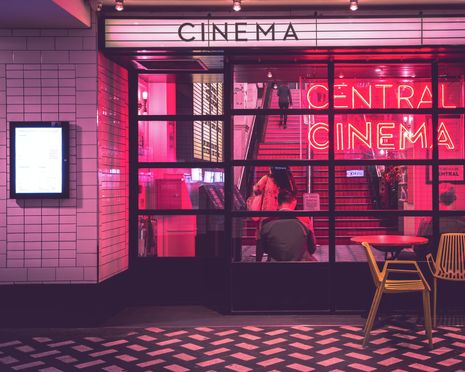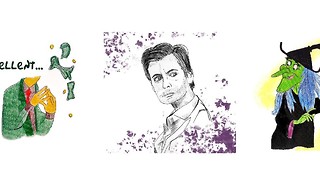Navigating modern life and heartbreak via Scarlett Johansson
Columnist Abby Reeves seeks to return to the days of cinematic double features, urging you to watch films in thematic pairs: here, she reunites Lost in Translation and Her

Following a break-up, it is common to seek refuge in fantastical situations. For the vast majority of us, this means watching terrible romcoms, daydreaming about finding love on Crushbridge and indulging in eating our feelings. If you are, instead, the daughter of Francis Ford Coppola with large amounts of money, connections in the industry and high off the buzz of your first indie hit, you make a film about it. As is the case for Sofia Coppola’s 2003 film Lost in Translation, made after her divorce with Spike Jonze.
“When Jonze and Coppola no longer want to think about their painful divorce, they embark on making a film”
This exercise in getting over an ex depicts the collision of two wayward souls: Bob (Bill Murray) and Charlotte (Scarlett Johansson) who find themselves stranded together in the neon-lit lagoon of Tokyo. Bob is an actor seemingly reaching his expiry date, stuck doing whiskey adverts rather than his previous Hollywood roles. Charlotte has been dragged across the world by her photographer husband, inattentive and largely absent from the plot apart from brief appearances. The film is a mediation on loneliness, mid-life crises and, of course, Coppola’s own marital troubles with fellow director Spike Jonze.
Ten years later, Jonze made what has often been interpreted as his reply to Coppola: the perverse love-story Her. After a recent divorce from his wife, Theodore Twombly, played by Joaquin Phoenix, seeks comfort in the ever-present though physically absent AI system, Samantha. The two films are placed in dialogue most explicitly by Scarlett Johansson, playing Charlotte and voicing Samantha. The parallels continue beyond Scar-Jo; both are set in ultra-modern cities, crammed full of people while remaining obstinately impersonal, both tackle themes of isolation and both contain rapidly failing marriages. The two films remain clearly linked contextually through their respective director’s former relations as well as thematically through their commentary on the isolation of modern life.
“The film is a meditation on loneliness, mid-life crises and, of course, Coppola’s own marital troubles”
In both, we follow protagonists seeking comfort in people who, realistically, it is impossible to have an actual future with. Through the cinematic medium, the directors are allowed to indulge in this fantasy visually without it being truly fulfilled. Cinema provides a refuge from the outside world, it enables our own escapist fantasies When real life is too difficult to confront, we can put on a film and be transported. When Jonze and Coppola no longer want to think about their painful divorce, they embark on making a film in which they can pursue a fantastical alternative. Charlotte and Bob, no matter what romantic undertones between the two, both have their own spouses.
They are swept up in the freedom of a place away from home in which opportunity presents itself, caught up in their own unlikely encounter until bleak reality eventually triumphs. This harsh reality check occurs far sooner in Jonze’s Her. Although Twombly may not realise it, the audience remains sharply aware that a relationship between a middle-aged man and a disembodied, hyper-intelligent computer system is practically impossible. Although Samantha is omnipresent, attentive to Theodore every hour of the day, she is also inescapably elusive. She cannot be a physical presence for Theodore, who craves intimacy and attention, and so he remains in limbo, pursuing the unattainable rather than facing the real world.
“Both are set in ultra-modern cities, crammed full of people while remaining obstinately impersonal”
We see strikingly similar shots in each film, a singular figure looking down onto the city through glass, mired in solitude against the backdrop of skyscrapers all vying for attention, monuments to the heaving city population we see spill out onto the streets during daytime. Coppola’s cityscape is specific; she depicts Tokyo as a modern conglomeration of flashing lights and foreign words. This portrayal succeeds in isolating both her protagonists as well as her intended American audience from this environment, creating a city defined by its ‘otherness’. Instead of using an ambiguous city setting like Jonze does, Coppola instead plays into Orientalist tropes of the mysteriously distant and exotic East.
Total Length of both films: 228 minutes, a little over 3 hours and a half. This certainly requires some stamina, but the beautiful cinematography and lead performances should keep you engaged throughout.
Best accompanied with: Edward Said’s ‘Orientalism’ and a bottle of wine (drowning the post-divorce struggles).
Recommended if you like: Noah Baumbach’s Marriage Story, anything with Scarlett Johansson or pondering the crisis of modern living.
Where to watch: Lost in Translation can be rented on Amazon or YouTube, Her is available on Netflix.
 News / Local business in trademark battle with Uni over use of ‘Cambridge’17 January 2026
News / Local business in trademark battle with Uni over use of ‘Cambridge’17 January 2026 Comment / The (Dys)functions of student politics at Cambridge19 January 2026
Comment / The (Dys)functions of student politics at Cambridge19 January 2026 News / Cambridge bus strikes continue into new year16 January 2026
News / Cambridge bus strikes continue into new year16 January 2026 Features / Exploring Cambridge’s past, present, and future18 January 2026
Features / Exploring Cambridge’s past, present, and future18 January 2026 News / Your Party protesters rally against US action in Venezuela19 January 2026
News / Your Party protesters rally against US action in Venezuela19 January 2026








